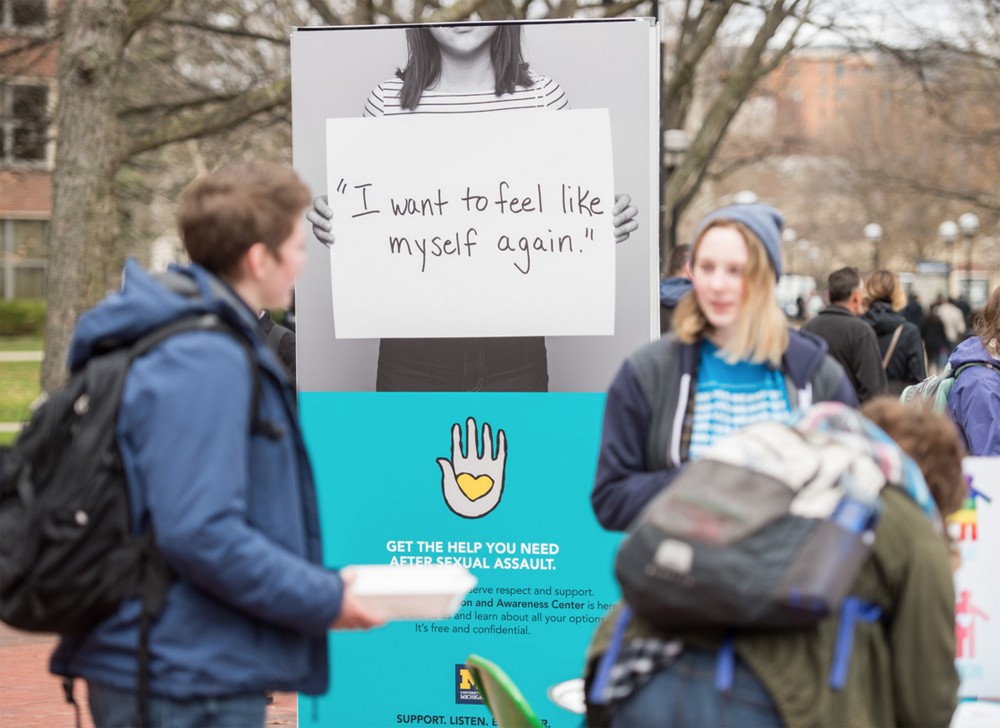Over the past several years, sexual assault on college campuses has received increasing national attention. From high-profile victim letters to a White House task force, the increased visibility of the public health and safety issue has led colleges and universities to evaluate their prevention efforts and response.
And rightly so. The latest statistics paint a bleak picture of how well previous efforts to prevent campus sexual violence have fared. A study published in 2015 by the American Association of Universities found that 1 in 5 female students and 1 in 7 male students reported experiencing a form of sexual assault on campus.
While much of the dialogue surrounding the issue focuses on heterosexual female victims, the rates of sexual assault and misconduct are actually highest among LGBTQ students, a fact rarely acknowledged in conversations about how to prevent and deal with the aftermath of campus sexual assault.
Twenty-seven schools participated in the study, including the University of Michigan, whose Sexual Assault and Prevention and Awareness Center (SAPAC) was founded nearly three decades ago.
Thirty-four percent of U-M female seniors reported experiencing some form of nonconsensual sexual contact, a statistic that SAPAC director Holly Rider-Milkovich says speaks more to successful university policies than higher frequency of assault.
Two students reported incidents of sexual misconduct in 2009, and in 2011 that number grew to 68. Seventy-five students reported incidents in 2012. Rider-Milkovich says part of the reason for the growing number is a change in university policy that occurred in 2011.
That year, U-M put into place procedures that changed the university's approach from a complaint-driven process to an investigatory process, meaning that before the fall of 2011, only a complainant moved the process forward. With the new policy, an investigation is carried out any time the university receives information about an incident of sexual misconduct.
"We see ending sexual violence as a community issue and community issues require community responses," Rider-Milkovich tells Metro Times. "When we have violence in the community, it erodes the entire community."
This emphasis on community has not only influenced policy on campus, but the way the center works to educate students on the nature of sexual violence. "The idea that sexual assault is only a women's issue is a misconception [that's] wrong, misguided, and dangerous," Rider-Milkovich says.
"Unless we have everyone working together, we're unlikely to make a dent in this serious public health and safety issue."
To achieve this, the SAPAC offers a variety of resources and services aimed at encouraging the entire U-M population to take an active role in eradicating and preventing sexual assault, including ally and bystander trainings, a men's activism group, and special roundtables during events like Transgender Awareness Week.
Many schools are beginning to understand that the notion that the responsibility of preventing sexual violence falls solely on the victim is logically flawed and symptomatic of a larger problem regarding how attitudes toward sexuality are formed. Callie Beusman wrote for Jezebel: "Sexual assault is the direct result of internalized toxic attitudes about sexuality and of malignant misunderstandings about how consent operates."
President Barack Obama echoed that sentiment during his unveiling of the White House Task Force to Protect Students from Sexual Assault in 2014. "We still don't condemn sexual assault as loudly as we should. We make excuses. We look the other way. The message that sends can have a chilling effect," he said.
Dr. David J. Strauss is the dean of students at Wayne State University, and campus sexual assault is something he takes very seriously.
"We talk to every new student. We go to every new student orientation, every transfer orientation. I go personally. I talk to parents," he says of his efforts to shed light on campus sexual assault and the resources available to students at Wayne State.
"I feel really good about the resources we have here," he says, but adds that the biggest problem with campus sexual assault lies outside of his power.
"It's the not reporting. People are afraid. They feel like they won't be believed. But, we're here to help them. Non-stop, we're always here. We give them mental health help. We're driving them to the police station. We're driving them to court. We're helping them file personal protection orders."
Strauss and Wayne State are part of a consortium founded by Wayne County Prosecutor Kym Worthy, a group that works together to create solutions to the ongoing problem of sexual assault.
Another issue, according to Strauss, is a fundamental misunderstanding of what sexual assault really is.
"People think sexual assault is what they see on CSI, but in the state of Michigan, criminal sexual assault does not have to be penetrative or invasive," he says.
While Strauss and his colleagues make it their job to ensure resources are available to those who've experienced sexual assault, prevention is still paramount. They're working on that too.
The No Zebras No Excuses program is a nationally recognized rape prevention program that focuses on bystander prevention. The vignette-based presentation originated at Central Michigan University, and now travels to campuses all over the country. Strauss says every new student, whether they're incoming freshmen, transferring students, commuters, or those who live on campus, will see this presentation and learn how to prevent sexual assault as a bystander.
"Zebras travel in packs, but if one gets attacked by a lion, they abandon the injured zebra to be eaten. We don't want our students to be zebras," Strauss says.


